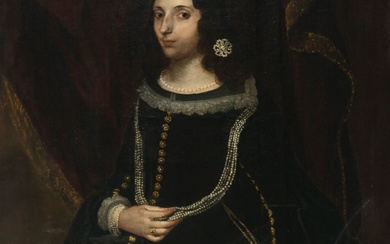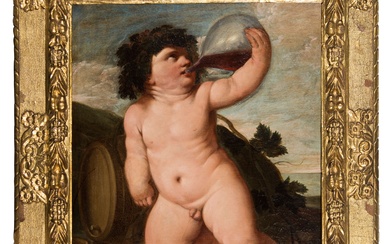spanish school 17th century "Penitent Saint Peter". Oil on copper. Presents repaints.
Spanish school 17th century.
"Penitent Saint Peter".
Oil on copper.
It presents repainting.
Measurements: 13 x 9 cm.
In this canvas we see St. Peter showing his repentance, after having denied Christ three times after his capture in the mount of Olives. The distinctive feature that allows us to establish the theme of the work is the cockerel in the central area. With regard to the subject depicted, Saint Peter (Bethsaida, c. 1 BC - Rome, 67) was, according to the New Testament, a fisherman, known to be one of Jesus' twelve apostles. The Catholic Church identifies him through the apostolic succession as the first Pope, based among other things on Jesus' words to him: "You are Peter, and on this rock I will build my Church, and the power of Death shall not prevail against it. I will give you the keys of the Kingdom of Heaven. Whatever you bind on earth shall be bound in heaven, and whatever you loose on earth shall be loosed in heaven". St. Peter could be said to have been Jesus' confessor, his closest disciple, and the two were united by a very special bond, as narrated in both the canonical and apocryphal Gospels.
It is worth mentioning that during Spanish colonial rule, a mainly religious painting was developed, aimed at Christianising the indigenous peoples. Local painters were modelled on Spanish works, which they followed literally in terms of type and iconography. The most frequent models were harquebusier angels and triangular virgins, but in the early 19th century, at the time of the independence and political opening of some of the colonies, several artists began to depict a new model of painting with its own identity.
View it on
Estimate
Time, Location
Auction House
Spanish school 17th century.
"Penitent Saint Peter".
Oil on copper.
It presents repainting.
Measurements: 13 x 9 cm.
In this canvas we see St. Peter showing his repentance, after having denied Christ three times after his capture in the mount of Olives. The distinctive feature that allows us to establish the theme of the work is the cockerel in the central area. With regard to the subject depicted, Saint Peter (Bethsaida, c. 1 BC - Rome, 67) was, according to the New Testament, a fisherman, known to be one of Jesus' twelve apostles. The Catholic Church identifies him through the apostolic succession as the first Pope, based among other things on Jesus' words to him: "You are Peter, and on this rock I will build my Church, and the power of Death shall not prevail against it. I will give you the keys of the Kingdom of Heaven. Whatever you bind on earth shall be bound in heaven, and whatever you loose on earth shall be loosed in heaven". St. Peter could be said to have been Jesus' confessor, his closest disciple, and the two were united by a very special bond, as narrated in both the canonical and apocryphal Gospels.
It is worth mentioning that during Spanish colonial rule, a mainly religious painting was developed, aimed at Christianising the indigenous peoples. Local painters were modelled on Spanish works, which they followed literally in terms of type and iconography. The most frequent models were harquebusier angels and triangular virgins, but in the early 19th century, at the time of the independence and political opening of some of the colonies, several artists began to depict a new model of painting with its own identity.







